Make Hiking Less Tiring With These Simple Strategies
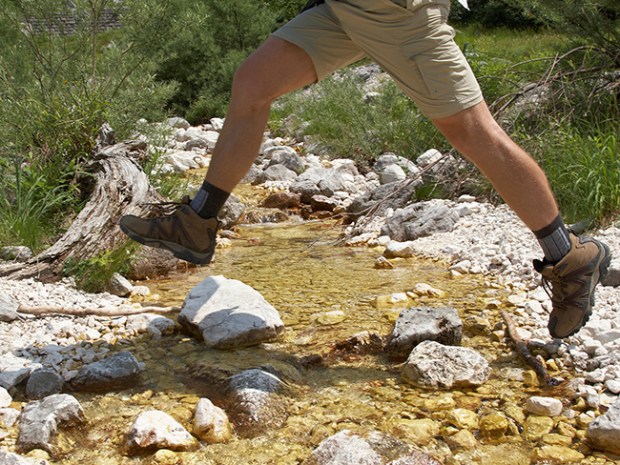
Up one hill and down another: Before you know it, your pack weighs a ton and you’re panting like a dog. But a hike does not have to be this tiring. A steady pace will conserve energy by ironing out all those ups and downs.
FIND YOUR STRIDE
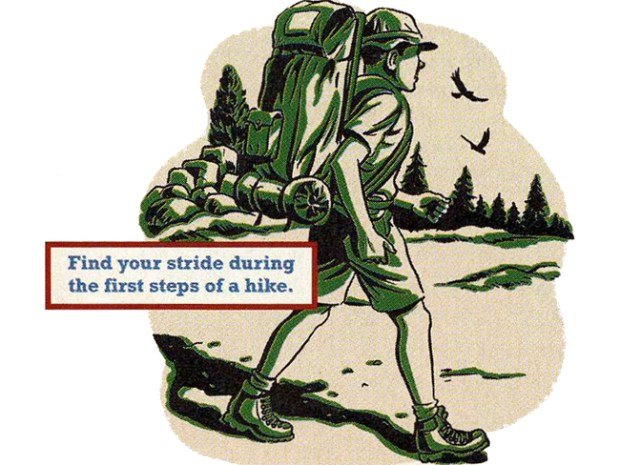
Everyone has a different stride (natural pace). Find yours during the first steps of a hike. It should be smooth — with rhythmic breathing, swinging arms and a consistent length to the step.
Maintaining that pace can be difficult. Slower hikers ahead on the trail slow your pace. Faster ones tempt you to hurry along.
Spreading out your group helps you maintain your pace. But for safety, your pace can’t be any faster than the slowest hiker in your group. It’s important that the group stay together.”
If not, when Scouts come to a fork in the trail they’ll get separated. And if a problem arises with hikers at the rear, the ones in front won’t know about it and will keep going.
HEADING UPHILL …
Shorten steps on steep portions of the trail but still retain your rhythm.
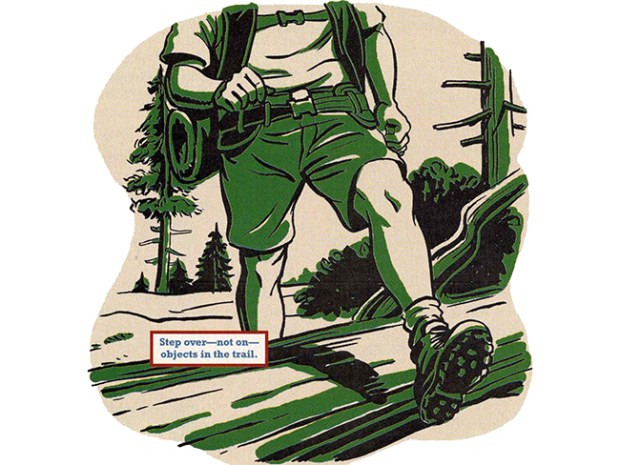
Also, step over objects in the trail instead of stepping on them. Stepping up on logs and rocks in the trail all day is like climbing an extra thousand feet straight up.
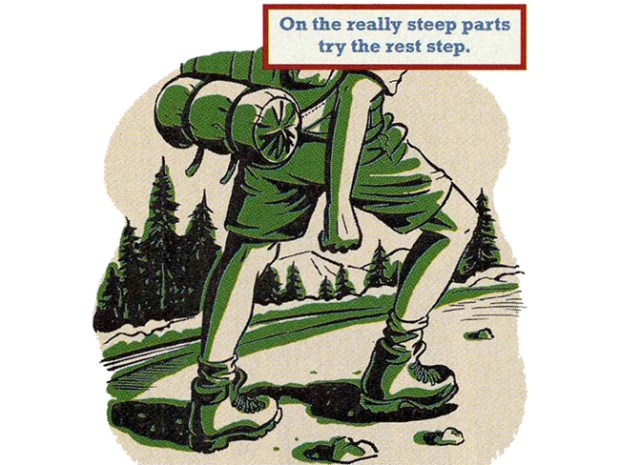
On the really steep parts of the trail, try a rest step. With each climbing step, straighten either the forward or trailing leg and lock the knee. Pause for a second, letting the bones of the locked leg bear your weight. This gives the leg muscles a short rest between steps.
… AND BACK DOWNHILL
The uphill struggle is rewarded with a downhill coast. But stay in control. Experts say they see way more injuries to hikers going downhill because they’re not in control.
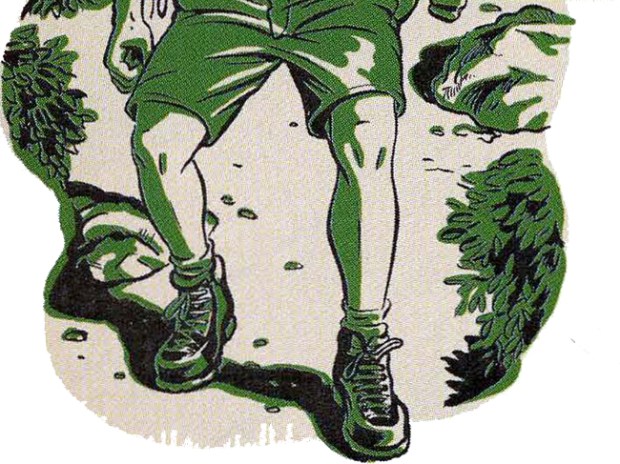
A slight bend in the knees absorbs the shock to the feet and leg joints when coming downhill. Placing the feet flat on the ground provides more boot sole surface to grip the ground.
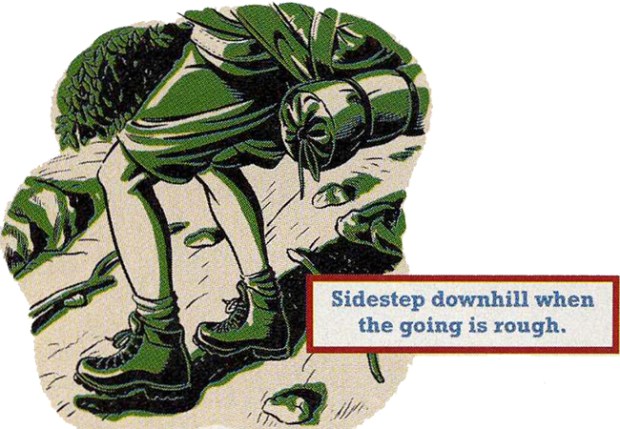
If the going’s real rough you might even want to side-step down the trail.
REST FREQUENTLY BUT NOT TOO LONG
Time between rest stops varies. In dry conditions or in areas with elevation changes, you may want to rest every 20 or 30 minutes. No matter what, try to stop at least every hour to readjust packs and drink some water.
Limit rests to five minutes or so. Any longer and muscles tend to tighten, making it harder to resume your hiking rhythm.
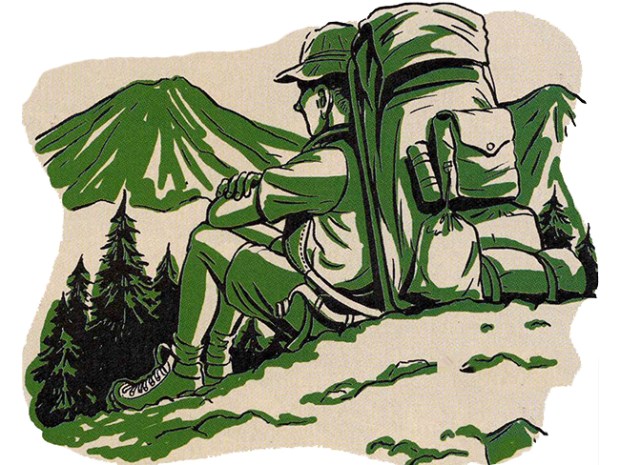
Sit and give your feet a break while resting. Face downhill so your pack rests on the ground, not on your aching back.
Leave the pack on, but loosen the hip belt and shoulder straps. That eliminates lifting the pack and struggling back into the belt and straps.
With a break and a drink, you’re ready to hit the trail again with a steady step.
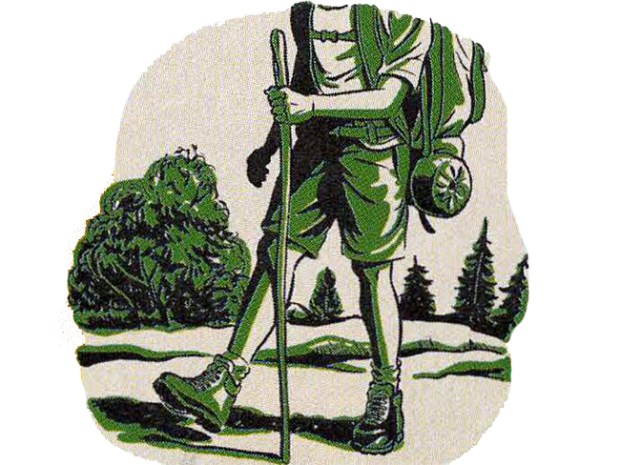
USE A WALKING STICK FOR ROUGH SPOTS
A walking stick lends a supporting hand while crossing streams or rough spots on a trail. Many hikers use the enduring wooden staff.
Modern trekking poles made of metal and/or plastics are lighter and provide a molded grip. Some hikers clutch a trekking pole in each hand. The swinging poles help help keep a fluid pace.
You can carve your own wooden walking stick. Click here to find how-to plans for creating your own.
Leave a Comment